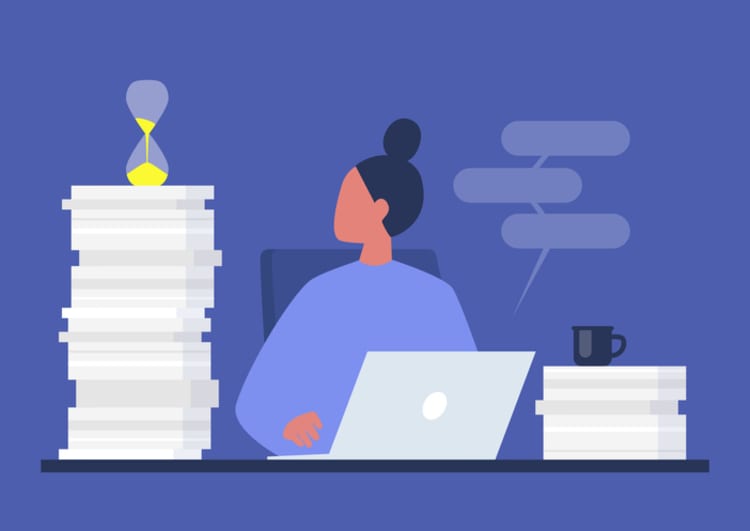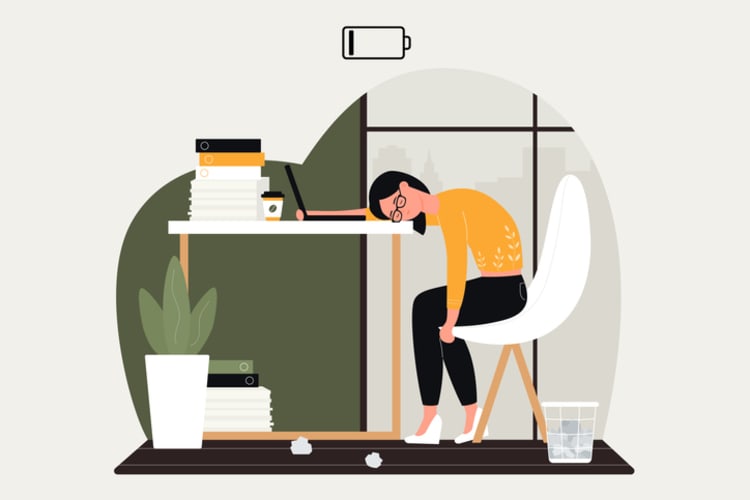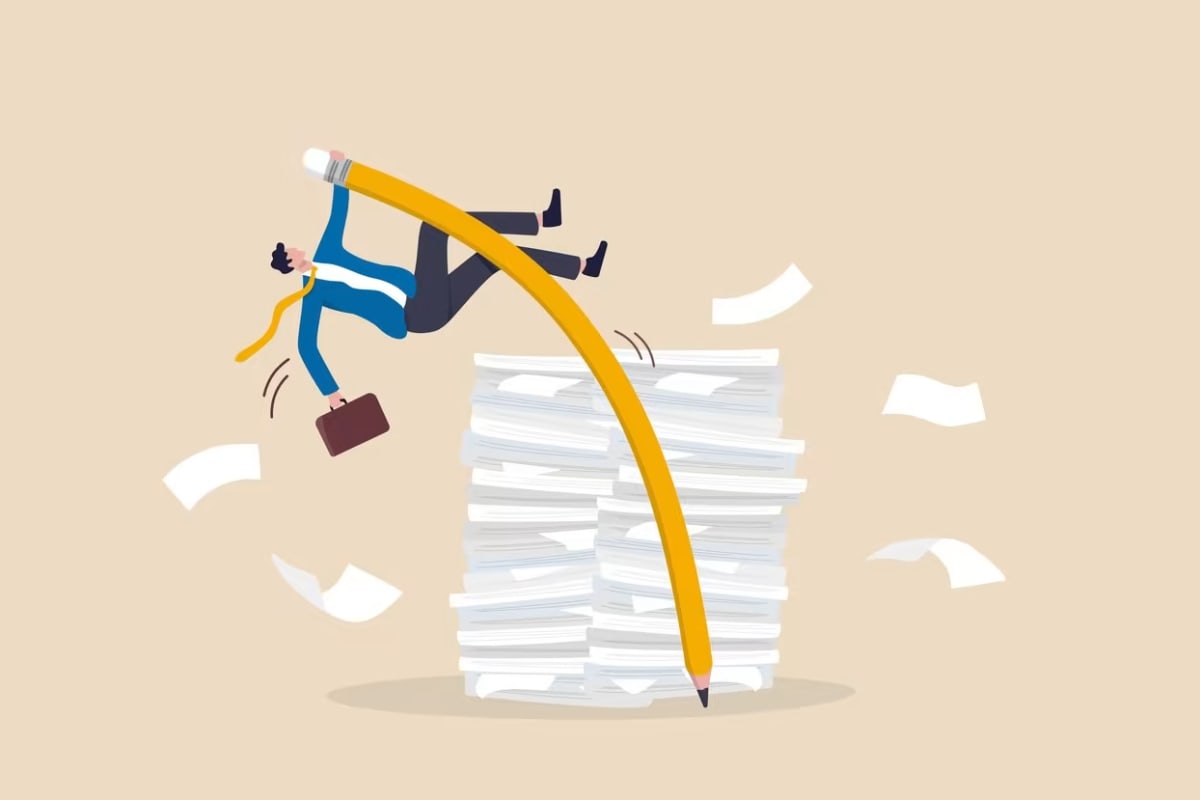Are you struggling to find a balance between work and personal life? Do you find yourself constantly chasing the elusive “work-life balance” while sacrificing your own well-being? If so, you may be experiencing the harmful effects of toxic productivity. In this blog post, we’ll explore the dangers of toxic productivity, its signs, and effective strategies to overcome it, so you can achieve a healthier balance in your life and career.
We’ll uncover the hidden pitfalls of hustle culture and perfectionism, and learn how to recognize the signs of toxic productivity, such as working excessive hours and neglecting personal life and self-care. Armed with this knowledge, we’ll discuss practical strategies for combatting toxic productivity, creating a healthy work environment, and seeking professional help when needed. Ready to break free from the toxic productivity cycle? Let’s dive in!
Key takeaways
- Recognize the signs of toxic productivity and prioritize self-care for a healthier work-life balance.
- Set boundaries, practice self-care, and set realistic goals to combat toxic productivity.
- Seek professional help and use additional resources to reclaim your life from burnout!
Understanding toxic productivity

Toxic productivity is a harmful mindset that prioritizes work over personal well-being, driven by hustle culture, fear of failure, and perfectionism, leading to burnout and negative consequences on mental and physical health. Young adults may turn to toxic productivity as a way to cope with difficult thoughts and emotions, especially during uncertain times. However, this temporary satisfaction and distraction can take a toll on one’s overall well-being, causing those experiencing toxic productivity to face:
- Burnout
- Depression
- Anxiety
- Insomnia
- Decreased immune function
- Increased risk of chronic diseases
It is important to recognize the signs of toxic productivity and prioritize self-care and balance in order to maintain a healthy and sustainable lifestyle.
Grasping the concept of toxic productivity paves the way for its mitigation, thereby fostering a healthier work-life balance. Acknowledging the perils of hustle culture, fear of failure, and perfectionism enables us to judiciously prioritize tasks, engage in self-care and sustain a balanced relationship between professional and personal life. In the end, we can achieve success without sacrificing our emotional well-being, family life, and physical health.
The dangers of hustle culture
Hustle culture glorifies constant busyness and productivity, creating an unhealthy environment that can lead to toxic productivity and negative impacts on well-being. The constant drive to be productive can leave us feeling physically and mentally depleted, exhausted, and overwhelmed. When we buy into the hustle culture mentality, we may neglect our self-care and self-worth, ultimately leading to a dangerous trap of constant busyness and potential mental health issues.
Escaping the clutches of hustle culture requires its perils to be acknowledged and health, both mental and physical, to be given precedence. By setting realistic expectations and practicing self-care, we can prevent burnout and promote a healthier lifestyle, both mentally and physically.
Fear of failure and perfectionism
Fear of failure and perfectionism are irrational and persistent fears that can be debilitating if we allow them to stop us from taking action or pursuing our goals. These fears can drive individuals to strive for excellence, yet if left unchecked, they can lead to overworking and toxic productivity, resulting in burnout and potential negative consequences on mental and physical health. Often, these fears stem from unrealistic expectations we place on ourselves, making it crucial to recognize and address them in order to maintain a healthy balance in our lives.
Identifying and confronting fear of failure and perfectionism is a precondition for their subjugation, leading to success. By understanding the root causes of these fears and developing healthy coping mechanisms, we can prevent toxic productivity and maintain a balanced approach to work and personal life.
Recognizing the signs of toxic productivity

Detecting the symptoms of toxic productivity is vital to address the problem and formulate solutions to overcome it. Working excessive hours, neglecting personal life, and self-care are key indicators that you may be overworking yourself and risking your overall well-being.
Accepting the existence of toxic productivity marks the beginning of its resolution in the professional sphere. By being aware of the warning signs, we can take proactive measures to prioritize self-care, establish boundaries, and maintain a healthy work-life balance. In the next sections, we’ll discuss specific signs of toxic productivity and strategies to combat them.
Working excessive hours
Working excessive hours is a common sign of toxic productivity. Driven by hustle culture, we may feel the need to constantly be productive, leading to longer hours, remote work, and an inability to disconnect from work. This can result in burnout, decreased overall productivity, and potential negative impacts on mental and physical health.
Counteracting overworking and promoting a balanced work-life dynamic necessitates giving equal importance to work and free time, establishing boundaries, and indulging in self-care. By taking breaks, engaging in hobbies, and spending personal time with loved ones, we can recharge and return to work refreshed and more productive.
Neglecting personal life and self-care
Neglecting personal life and self-care can result in physical and mental health issues, indicating the presence of toxic productivity. When we prioritize work over recreation, friendships, self-care, and family life, we risk jeopardizing our emotional well-being and physical health.
In order to avert such adverse effects, it’s pivotal to practice self care and allocate ample personal time, consequently rejuvenating our mental health and sustaining a balanced work-life relationship. By carving out time for:
- Hobbies
- Exercise
- Travel
- Relaxation
- Socializing
We can overcome toxic productivity, avoid its pitfalls, and ensure a well-rounded, fulfilling life.
Strategies for combating toxic productivity

Having pinpointed the indicators of toxic productivity, it’s now apt to delve into pragmatic methods of tackling it. Establishing boundaries, prioritizing self-care and well-being, and setting realistic goals and expectations can help us break free from the toxic productivity cycle and maintain a healthy balance between work and personal life.
Employing these strategies empowers us to triumph over toxic productivity, enhance our mental and physical health and lead a more balanced and fulfilling life. Let’s dive deeper into each of these strategies and how they can help us combat toxic productivity.
Establishing boundaries
The demarcation between professional and personal life is vital for thwarting toxic productivity and sustaining a balanced work-life relationship. Clear boundaries can help us manage our workload effectively and ensure we have enough time for self-care and personal commitments.
To set and maintain boundaries, we must be disciplined and consistent. Here are some tips:
- Stick to a schedule that clearly delineates work and personal time.
- Avoid letting work encroach on personal time.
- Create a better work-life balance.
- Protect ourselves from the harmful effects of toxic productivity.
By following these tips, we can establish healthy boundaries and prioritize our well-being.
Prioritizing self-care and well-being

Giving precedence to self-care and well-being is fundamental to sidestep toxic productivity and concentrate on our mental and physical health. By taking care of our body and mind, we enable ourselves to be even more productive and maintain a healthy work-life balance.
Some inspiring examples of self-care activities to combat toxic productivity include:
- Taking a yoga class
- Going on a hike
- Playing a favorite sport
- Soaking in an Epsom salt bath
- Enjoying a massage
- Work from a new place
- Eating nutritious meals
- Getting to bed early
- Talking to a mental health professional (if needed)
By incorporating these activities into our daily routine, we can ensure our well-being and stay productive without compromising our health.
Setting realistic goals and expectations
Formulating achievable objectives and expectations can deter excessive work and assist in maintaining a healthy balance between productivity and personal health. By being proactive and setting clear goals, we can distinguish between tasks that require urgent attention and those that can wait, and free up time by delegating non-essential items from our to-do list.
Using the SMART goal framework (Specific, Measurable, Achievable, Realistic, and Time-bound) can help us set achievable objectives and stay on track without falling into the trap of toxic productivity. By setting realistic goals and expectations, we can work efficiently and effectively, while still taking care of our personal well-being.
Creating a healthy work environment

Formulating a conducive work atmosphere is fundamental for battling toxic productivity. By encouraging open communication, promoting flexibility, and supporting work-life balance, we can foster a supportive and understanding environment that helps employees manage their workload effectively and maintain a healthy balance between work and personal life.
A healthy work environment not only helps employees avoid toxic productivity, but also boosts overall productivity and job satisfaction. In the following sections, we’ll discuss the importance of open communication and flexibility in creating a healthy work environment.
Encouraging open communication
Promoting transparent communication within the professional space can aid in tackling toxic productivity by cultivating a supportive and empathetic environment. Open communication allows employees to express their concerns, share their experiences, and collaborate more effectively with their colleagues.
By creating an open and supportive environment, ensuring clear communication channels, encouraging feedback and dialogue, and recognizing and rewarding open communication, we can motivate employees to engage in honest conversations about their workload, well-being, and work-life balance. This, in turn, can help combat toxic productivity and create a healthier work environment for everyone.
Promoting flexibility and work-life balance
Advocating for flexibility and work-life balance can assist employees in evading toxic productivity by enabling effective management of their workload and personal life. By offering flexible work hours, remote work options, and encouraging employees to take breaks and prioritize self-care, we can foster a healthy work environment that supports both productivity and personal well-being.
A flexible work environment offers several benefits, including:
- Helping employees avoid toxic productivity
- Boosting job satisfaction, engagement, and overall performance
- Creating a positive and supportive workplace culture
- Benefiting both employees and the organization as a whole
Seeking professional help

For certain individuals, resorting to professional assistance might be a necessary step towards resolving toxic productivity. Professional help can provide individuals with:
- The tools and strategies to effectively manage their toxic productivity and uncover the underlying causes
- A safe and supportive environment to explore their feelings and experiences
- Help in gaining a better understanding of themselves
In the following sections, we’ll discuss cognitive behavioral therapy and additional resources that can be beneficial for individuals struggling with toxic productivity. Remember, seeking professional help is not a sign of weakness, but rather a proactive step towards regaining control over your work-life balance and well-being.
Cognitive behavioral therapy
Cognitive behavioral therapy (CBT) can aid individuals in tackling the root causes of toxic productivity and cultivating healthier work practices. This evidence-based therapy focuses on:
- Identifying negative thought patterns
- Transforming negative behaviors
- Empowering individuals to break free from the toxic productivity cycle
- Regaining control over their lives
Through CBT, individuals can learn to challenge negative thought patterns, develop healthier coping strategies, and set boundaries to prioritize self-care. By addressing the root causes of toxic productivity, individuals can work towards a healthier work-life balance and improved mental and physical well-being.
Additional resources
Supplementary resources, encompassing books and online courses, can offer valuable perspectives and tactics for surmounting toxic productivity and preserving a balanced work-life relationship. By exploring these resources, individuals can:
- Deepen their understanding of toxic productivity
- Learn practical tips for combatting it
- Gain inspiration from others who have successfully navigated similar challenges
Some recommended books include “The Power of Now” by Eckhart Tolle, “The 7 Habits of Highly Effective People” by Stephen Covey, and “The 4-Hour Workweek” by Tim Ferriss.
Online courses such as “Time Management for Busy Professionals” and “Stress Management for Busy Professionals” can also provide valuable insights and strategies for overcoming toxic productivity and maintaining a healthy work-life balance.
Summary
In conclusion, toxic productivity is a pressing issue that can negatively impact our mental and physical health. By understanding its dangers, recognizing its signs, and adopting practical work strategies, we can combat toxic productivity and maintain a healthy work-life balance. Whether it’s establishing boundaries, prioritizing self-care, setting realistic goals, creating a healthy work environment, or seeking professional help, taking proactive steps to address toxic productivity is essential for our well-being and overall success.
Remember, the key to a fulfilling and productive life lies in striking the right balance between work and personal life. By prioritizing self-care, setting boundaries, and practicing open communication, we can break free from the toxic productivity cycle and achieve a healthier, more balanced life.
Frequently Asked Questions
Toxic productivity is the relentless pursuit of productivity, often to the detriment of our health and relationships. It involves pushing ourselves to unhealthy extremes to accomplish more, disregarding our well-being in favour of completing tasks.
This type of behaviour can lead to burnout, anxiety, and depression. It can also cause physical health problems, such as fatigue, headaches, and digestive issues. Additionally, it can lead to accidents.
Toxic productivity is characterized by a continuous drive to be productive, often at the expense of personal health and relationships. Signs include working extra hours, feeling guilty for taking breaks, prioritizing self-care, having a hard time disconnecting and relying heavily on willpower.
These behaviors can lead to burnout, anxiety, and depression. It’s important to recognize the signs of toxic productivity and take steps to address them. This could include setting boundaries, taking breaks, and prioritizing.
Toxic productivity is an unhealthy obsession with being productive, often to the detriment of physical and mental health. It can manifest in always pushing oneself to do more, no matter how tired or sick, in order to achieve greater levels of productivity.
This can lead to burnout, anxiety, and depression, as well as physical ailments such as headaches, fatigue, and insomnia. It can also lead to a lack of creativity and a feeling of boredom.
Combat toxic productivity by establishing boundaries, prioritizing self-care, setting realistic goals and expectations, and creating a healthy work environment.
Encourage open communication, promote flexibility, and support work-life balance to create a healthy work environment and combat toxic productivity.





